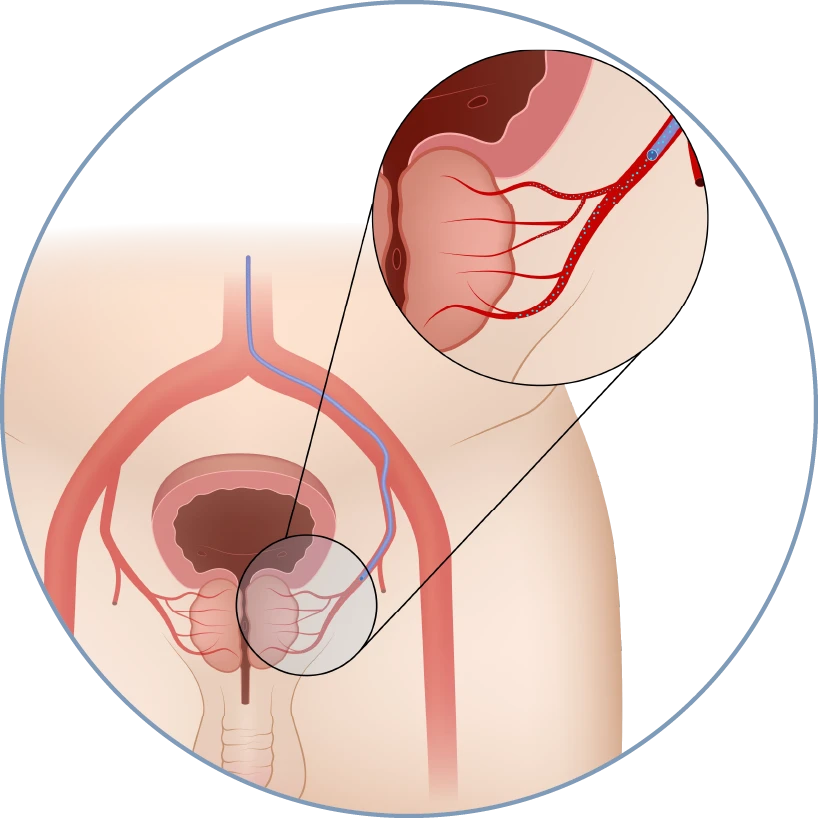Prostate Artery Embolization (PAE)
Prostate artery embolization (PAE) is a minimally invasive procedure designed to reduce the size of an enlarged prostate and alleviate common urinary symptoms associated with benign prostatic hyperplasia (BPH). Symptoms that PAE treats include difficulty urinating, weak urine stream, frequent nighttime urination, incomplete bladder emptying, and the need to strain when voiding.


How PAE Works
This outpatient, nonsurgical procedure allows you to go home the same day without any incisions in the penile or genital area. Instead, the prostate is treated by targeting its blood supply. The interventional radiologist will access the blood vessels through a small incision, just a few millimeters in size, made in the groin or wrist. From there, tiny, flexible tubes called microcatheters are guided into the arteries that supply the prostate. Microscopic particles are injected into the prostate, reducing its blood flow. Once the procedure is complete, the instruments are removed, and patients typically go home within a few hours.
Recovery and Results
Recovery from PAE is generally mild. You will be advised to limit activity for two days, and medications will be provided to help manage any discomfort while the prostate adjusts to its reduced blood supply. Significant side effects are rare, and most men experience noticeable improvement in symptoms within one month.
Request an appointment
Schedule a consultation with our expert interventional radiology team to learn more and find out if this innovative treatment is right for you.